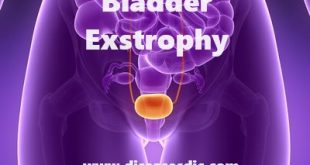What is biliary obstruction?
Biliary obstruction is a blockage of the bile ducts. A “duct” is a tube that carries specific bodily fluids.
The bile ducts carry bile from the liver and gallbladder through the pancreas to the duodenum, which is a part of the small intestine. Bile is a dark-green fluid secreted by the liver to digest fats, and it’s stored in the gallbladder.
After you eat, the gallbladder releases bile to help in digestion and fat absorption. Bile also helps clear the liver of waste products.
Obstruction of any of these bile ducts is referred to as a biliary obstruction. Many of the conditions related to biliary obstructions can be treated successfully. However, if the blockage remains untreated for a long time, it can lead to life threatening diseases of the liver.
Pathophysiology
Intrahepatic cholestasis generally occurs at the level of the hepatocyte or biliary canalicular membrane. Causes include hepatocellular disease (eg, viral hepatitis, drug-induced hepatitis), drug-induced cholestasis, biliary cirrhosis, and alcoholic liver disease. In hepatocellular disease, interference in the three major steps of bilirubin metabolism, ie, uptake, conjugation, and excretion, usually occurs. Excretion is the rate-limiting step and is usually impaired to the greatest extent. As a result, conjugated bilirubin predominates in the serum.
Extrahepatic obstruction to the flow of bile may occur within the ducts or secondary to external compression. Overall, gallstones are the most common cause of biliary obstruction. Other causes of blockage within the ducts include malignancy, infection, and biliary cirrhosis. External compression of the ducts may occur secondary to inflammation (eg, pancreatitis) and malignancy. Regardless of the cause, the physical obstruction causes a predominantly conjugated hyperbilirubinemia.
Accumulation of bilirubin in the bloodstream and subsequent deposition in the skin causes jaundice (icterus). Conjunctival icterus is generally a more sensitive sign of hyperbilirubinemia than generalized jaundice. Total serum bilirubin values are normally 0.2-1.2 mg/dL. Jaundice may not be clinically recognizable until levels are at least 3 mg/Dl. Urine bilirubin is normally absent. When it is present, only conjugated bilirubin is passed into the urine as it is water soluble. This may be evidenced by dark-colored urine seen in patients with obstructive jaundice or jaundice due to hepatocellular injury. However, reagent strips are very sensitive to bilirubin, detecting as little as 0.05 mg/dL. Thus, urine bilirubin may be found before serum bilirubin reaches levels high enough to cause clinical jaundice.
The lack of bilirubin in the intestinal tract is responsible for the pale stools typically associated with biliary obstruction. The cause of itching (pruritus) associated with biliary obstruction is not clear. Some believe it may be related to the accumulation of bile acids/bile salts in the skin. Others suggest it may be related to the release of endogenous opioids.
Causes of Biliary Obstruction
Here are some of the common causes of biliary obstruction.
Cholelithiasis or gallstones. Bile can solidify in your gallbladder if you have high blood cholesterol levels. This leads to stone-like deposits called gallstones. Large gallstones can get stuck in your bile duct and result in biliary obstruction.
Cancer. Bile duct cancer, gallbladder cancer, or pancreatic cancer can spread quickly. They are known to cause bile duct obstruction.
Injury during surgery. Bile duct injuries like a cut, burn, scar, or pinch during gallbladder surgery can cause a blocked bile duct.
Choledochal cysts. These can occur when parts of your bile duct become enlarged. In a few cases, they can lead to bile duct obstruction.
Chronic pancreatitis. Biliary obstruction can result from other conditions like pancreatitis — which is chronic inflammation in your pancreas.
Other causes. Your bile duct can become blocked if you get an injury in your abdomen. It may also occur due to infections, especially if you are taking drugs to suppress your immune system.
Risk factors of Biliary Obstruction
The risk factors include:
- History of gallstones, chronic pancreatitis, or pancreatic cancer
- Injury to the abdominal area
- Recent biliary surgery
- Recent biliary cancer (such as bile duct cancer)
The blockage can also be caused by infections. This is more common in people with weakened immune systems.
Symptoms
The symptoms of biliary obstruction can depend on the cause of the obstruction. People with biliary obstruction usually have:
- Abdominal pain in the upper right side
- Dark urine
- Fever
- Itching
- Jaundice (yellow skin color)
- Nausea and vomiting
- Pale-colored stools
Complications
If left untreated, bile duct obstructions can lead to life-threatening infections. In the long-term, they can also result in chronic liver diseases, such as biliary cirrhosis.
If the “drainpipe” at the bottom of the liver, or the common bile duct, remains blocked, a buildup of bilirubin in the bloodstream can lead to jaundice.
This blockage can also lead to bacteria backing up into the liver, which can cause a severe infection known as ascending cholangitis.
If the blockage occurs between the gallbladder and the common bile duct, a person is at risk of cholecystitis. This is an inflammation of the gallbladder that can lead to a severe infection or the rupturing of the gallbladder. Both of these complications of cholecystitis require emergency surgery to remove the gallbladder.
Diagnosis of Biliary Obstruction
If you have a biliary obstruction, your doctor will examine your gallbladder and check your symptoms. Certain symptoms of biliary obstruction like jaundice can be confused with liver disease. Your doctor may check your history and ask about your alcohol or drug use.
Your doctor will order blood tests to check if the levels of the following are high:
- Bilirubin
- Alkaline phosphatase
- Pancreatic enzymes like amylase and lipase
- Liver enzymes like gamma-glutamyltransferase
If your blood test results suggest biliary obstruction, your doctor may confirm the diagnosis using:
- Ultrasound
- Computed tomography
- Magnetic resonance cholangiopancreatography
- Percutaneous transhepatic cholangiogram
- Endoscopic retrograde cholangiopancreatography
Biliary Obstruction Treatment
The goal of treatment is to relieve the bile duct obstruction. Stones may be removed using an endoscope during an ERCP (endoscopic retrograde cholangiopancreatography).
In some cases, surgery is required to bypass the blockage. The gallbladder will usually be surgically removed if the blockage is caused by gallstones. Your provider may prescribe antibiotics to treat a bile duct infection if an infection is suspected.
If the blockage is caused by cancer, the duct may need to be widened. This procedure is called endoscopic or percutaneous (through the skin next to the liver) dilation. A tube may need to be placed to allow drainage.
Itchy skin
Your doctor may recommend over-the-counter products and medicines or prescribe medicines to treat itchy skin. Over-the-counter products and medicines include:
- skin creams and lotions that contain camphor, menthol , pramoxine , or capsaicin
- antihistamines such as fexofenadine
For mild itchy skin, your doctor may prescribe hydroxyzine. For severe itchy skin, your doctor may prescribe cholestyramine.
Low levels of fat-soluble vitamins in your body
If you have low levels of fat-soluble vitamins in your body, your doctor may recommend dietary supplements of vitamins A, D, E, and K. Follow your doctor’s instructions on the type and amount of vitamins you should take.
Biliary Obstruction Surgery
Individuals with cancerous lesions need a multidisciplinary approach from the onset of their work-up. Interventional approaches are used to help diagnose the lesions. Once diagnosed, optimal management is discussed with surgeons, interventionalists and oncologists. If the patient is deemed a surgical candidate, physicians pursue resection of the lesion followed by biliary reconstruction. These operations depend on the location of the lesion causing the obstruction (liver, bile duct, and/or pancreas). Interventional approaches are usually used in cases in which the patient is not a surgical candidate and the risk of the operation is outweighed by the benefits afforded by surgical intervention.
The mainstay of surgical treatment is to first remove the area of stricture, then reconstruct the biliary system. The most common operation is a Roux-en-Y reconstruction. The Roux limb is connected to the remnant bile duct outside of the liver (Roux-en-Y choledochojejunostomy) or the bile ducts within the liver (Roux-en-Y hepaticojejunostomy). All procedures require close oncological follow-up.
Can Biliary Obstruction be prevented?
Here are a few changes you can make to lower your chances of developing a biliary obstruction:
- Increase the amount of fiber in your diet.
- Decrease the amount of sugar and saturated fats in your diet. These can increase the likelihood of gallstones.
- If you’re overweight or living with obesity, gradually work to get your weight to a moderate level based on your sex, age, and height.
 Diseases Treatments Dictionary This is complete solution to read all diseases treatments Which covers Prevention, Causes, Symptoms, Medical Terms, Drugs, Prescription, Natural Remedies with cures and Treatments. Most of the common diseases were listed in names, split with categories.
Diseases Treatments Dictionary This is complete solution to read all diseases treatments Which covers Prevention, Causes, Symptoms, Medical Terms, Drugs, Prescription, Natural Remedies with cures and Treatments. Most of the common diseases were listed in names, split with categories.






